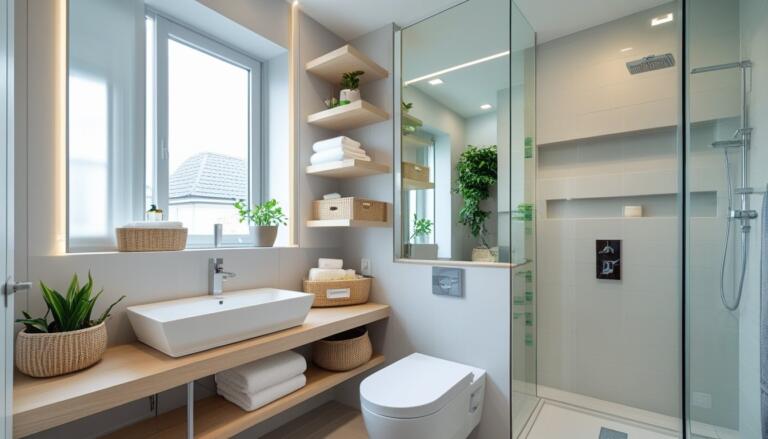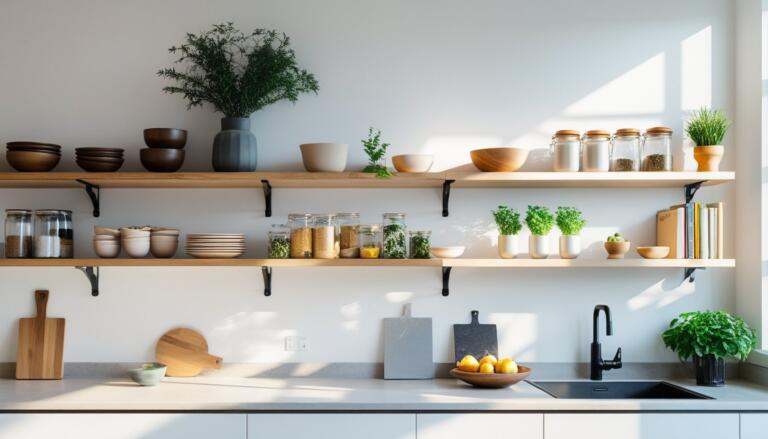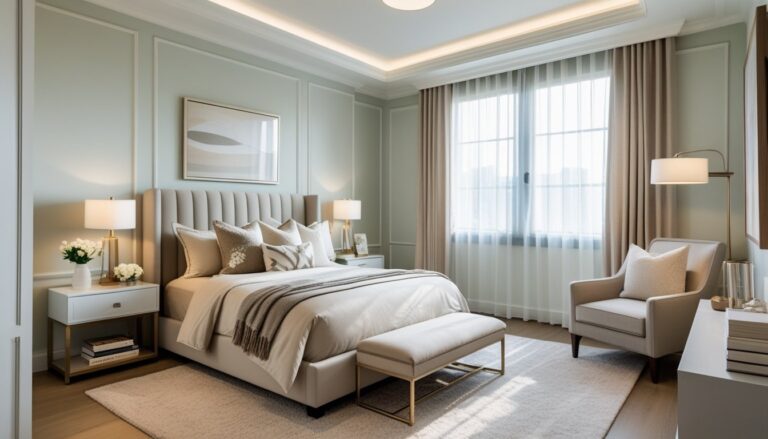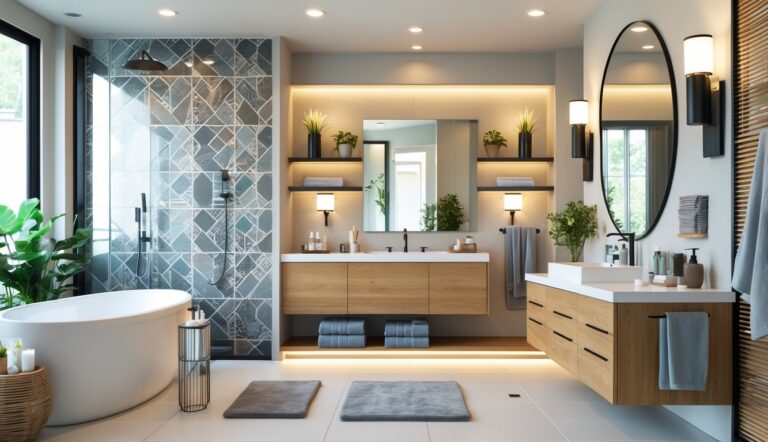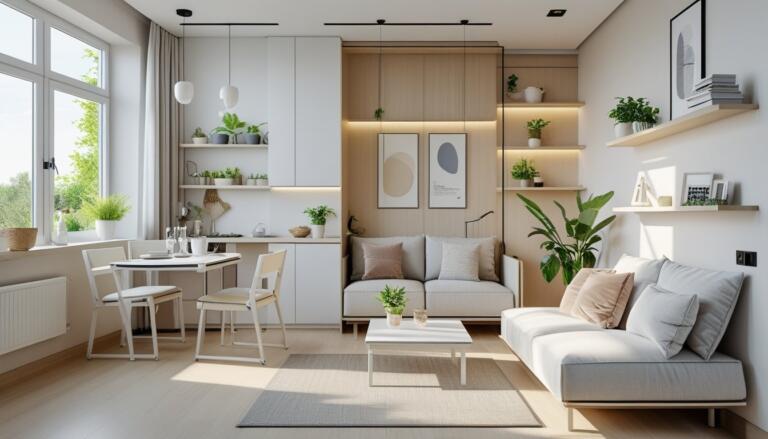10 Bedroom Interior Ideas for a Modern and Functional Home
Many people want a bedroom that feels both comfortable and practical. Designing this space well can improve daily life by making it easier to relax and stay organized.
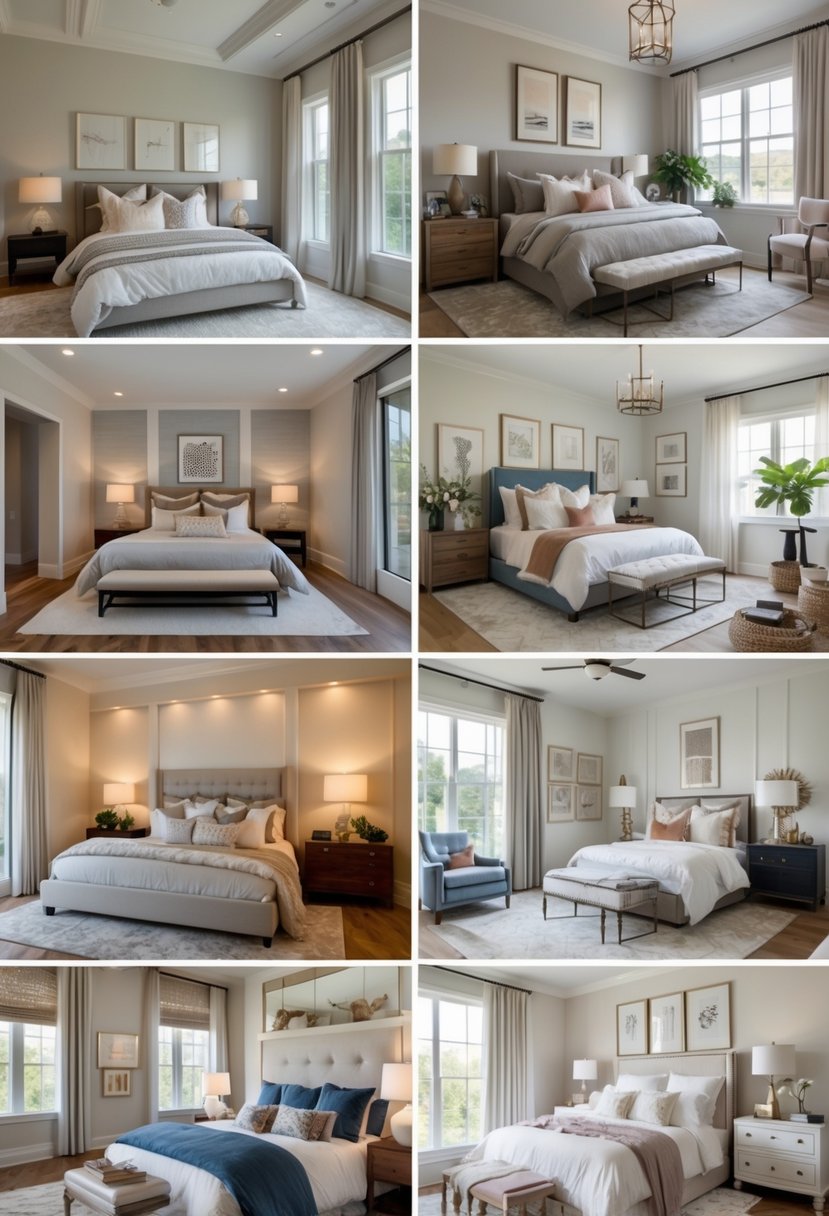
The key to a good bedroom design is finding ideas that balance style with function. This helps create an environment that suits different needs while making the most of the available space.
1) Install a dark feature wall to add depth and drama
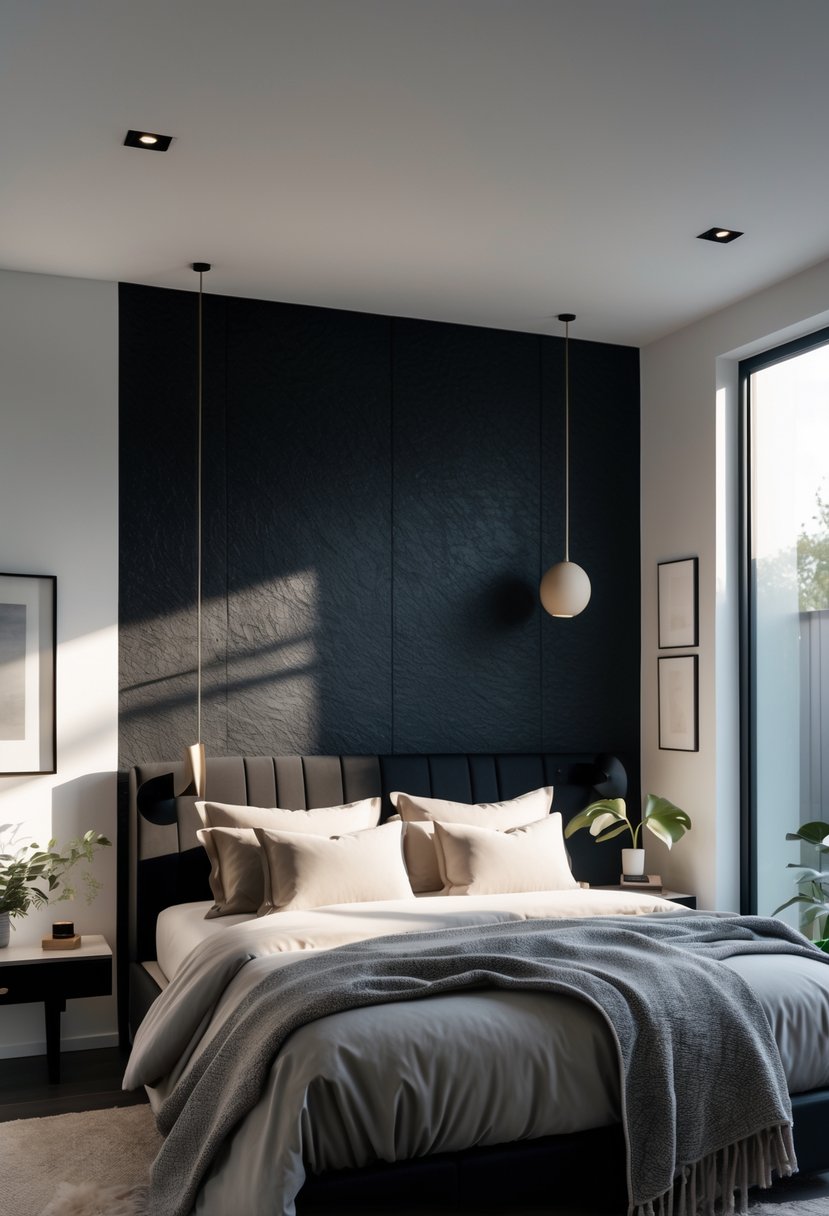
A dark feature wall can change the look of a bedroom without a full renovation. It adds depth and makes the room feel more cozy and stylish.
Choosing the right dark color, like deep blue or charcoal, creates a strong contrast with lighter bedding or furniture. This contrast draws attention and gives the room a clear focal point.
Textured wallpaper or paint can add even more interest to the wall. This simple change can make the bedroom feel more modern and inviting.
2) Use an ornate upholstered headboard with bold patterns
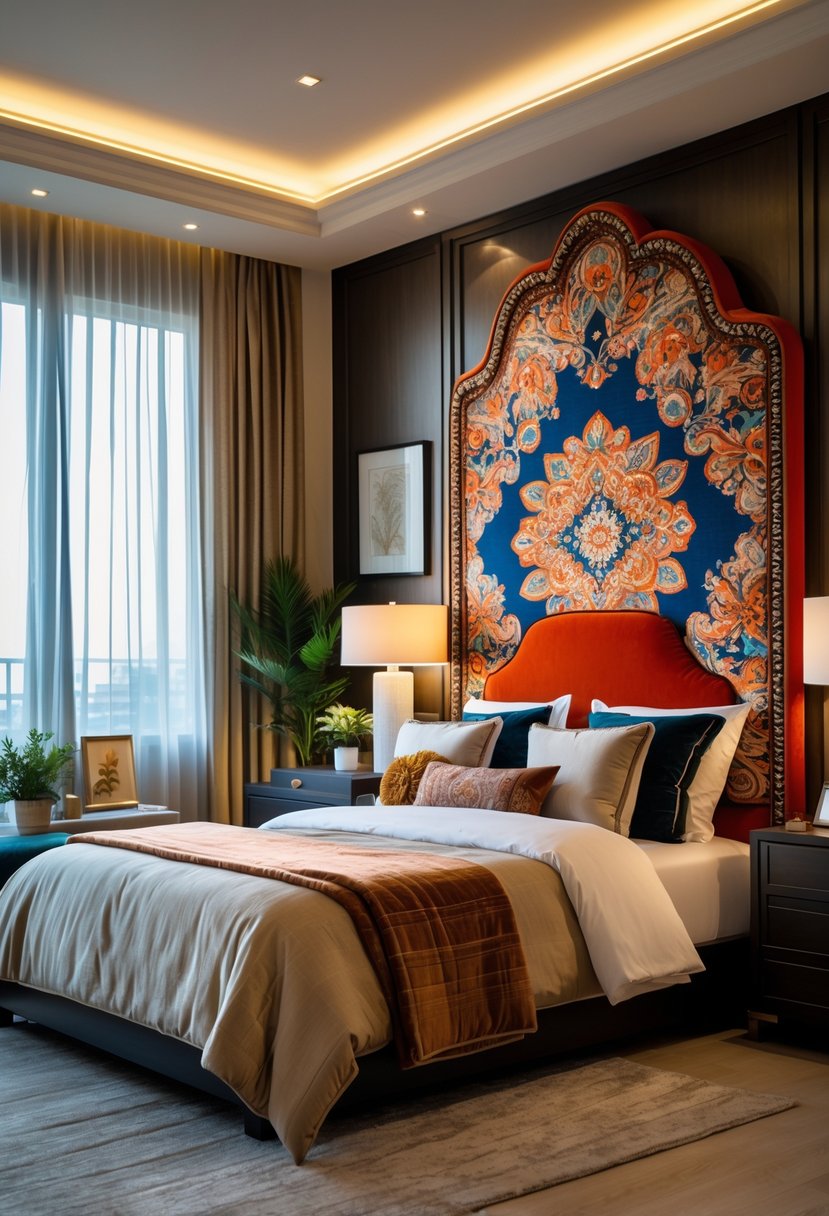
An upholstered headboard with bold patterns adds texture and color to the bedroom. It can become the room’s main feature without overwhelming the space.
Ornate designs, like tufted details or geometric shapes, offer a stylish yet comfortable look. These headboards work well with simple bedding and walls to balance the room’s decor.
Choosing fabric patterns that match other elements, such as curtains or rugs, helps create a cohesive and polished appearance. This style brings both elegance and personality to the bedroom.
3) Incorporate white wainscoting for a polished look

White wainscoting adds a neat, classic touch to any bedroom. It gives the walls texture without using much space.
This detail brightens the room and can make the space feel orderly and fresh. It fits well with many design styles, from traditional to modern.
Using soft white or off-white shades helps keep the room airy. Wainscoting can also protect walls and add visual interest to plain surfaces.
4) Choose olive green walls paired with metallic sconces
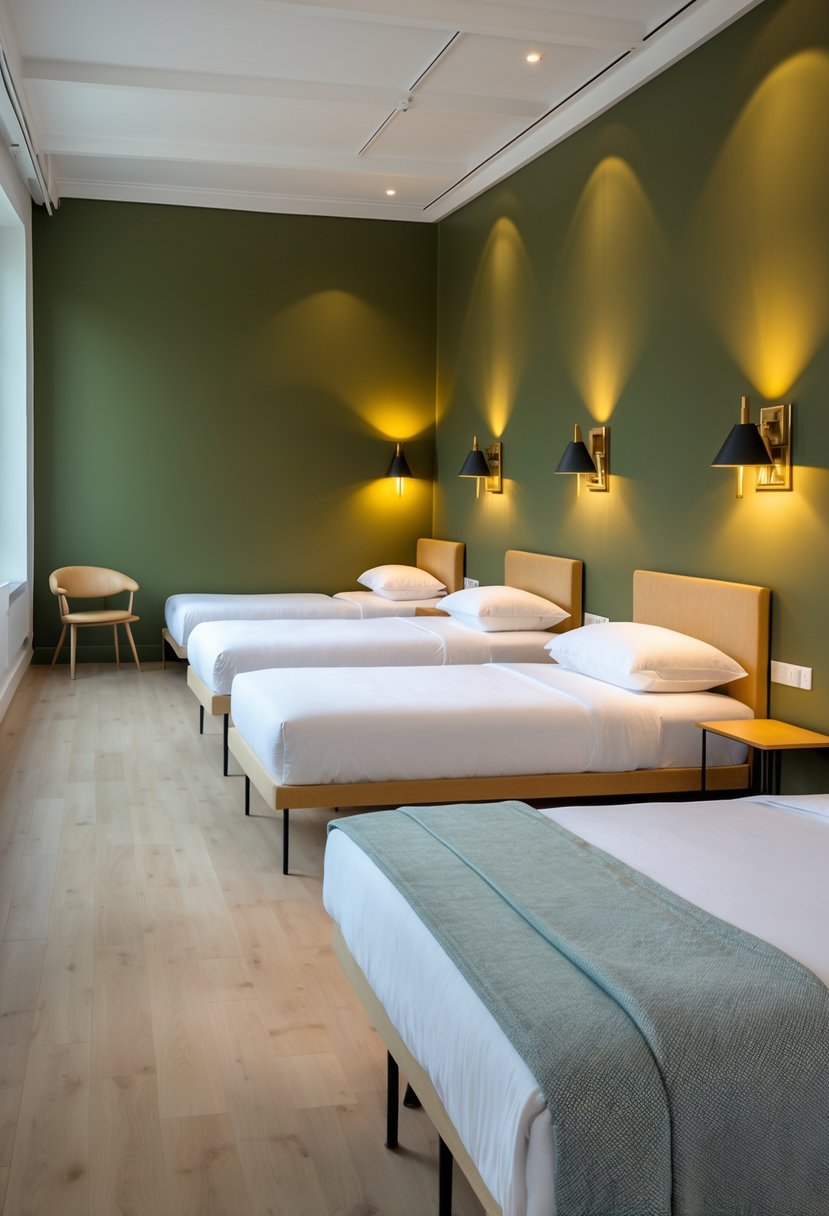
Olive green walls create a rich and calming background for a bedroom. This deep color adds warmth and depth without being overwhelming.
Pairing olive green with metallic sconces brings a modern, industrial touch. Metals like black or brass contrast well with the green, highlighting the wall’s color.
Metal sconces also add practical lighting above the bed or along the wall. This combination balances soft color with sharp, clean lines.
5) Create a cozy reading nook with soft white and beige textures
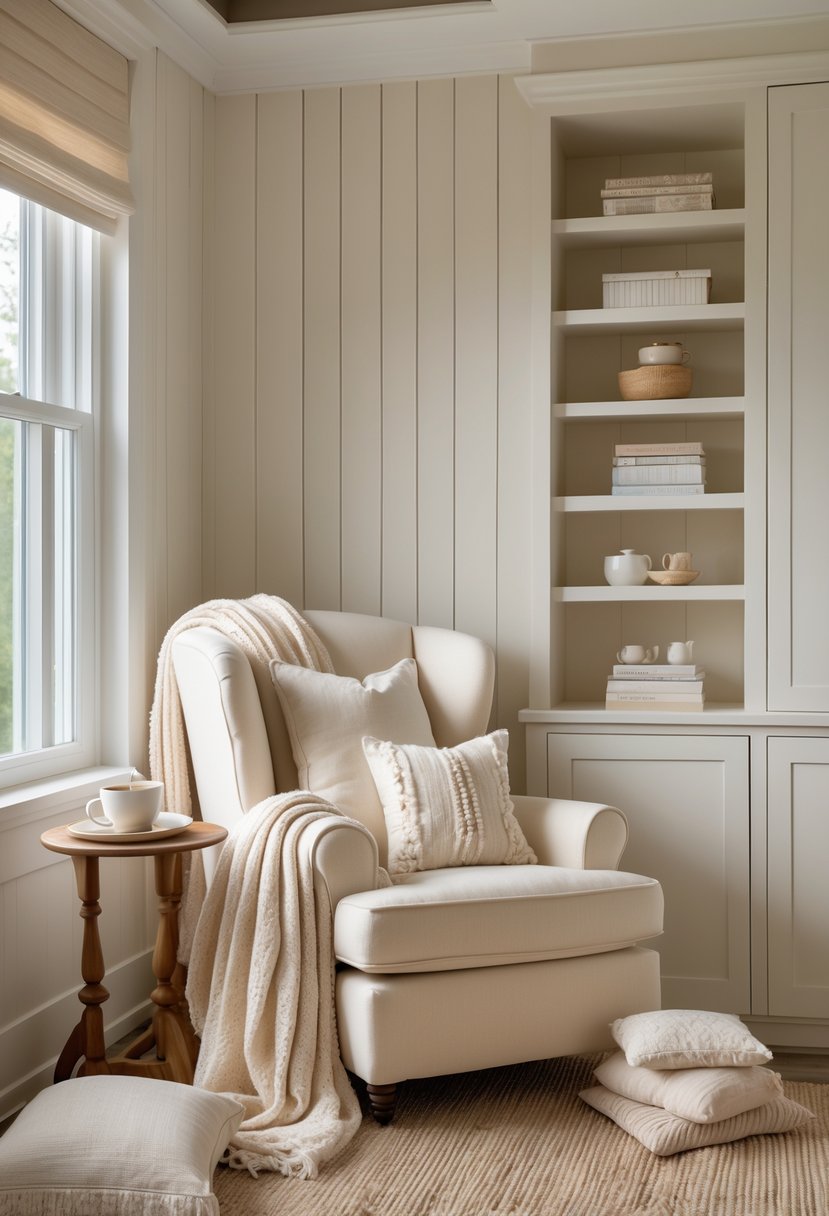
A reading nook with soft white and beige tones offers a calm, inviting space. Using a comfortable armchair or window seat with cushions in these colors adds warmth without overwhelming the room.
Mixing different fabrics like cotton, velvet, and knit creates subtle texture that feels cozy. Soft lighting enhances the peaceful atmosphere, perfect for relaxing with a book.
This style fits well in small corners and bedrooms. It invites quiet moments without needing much space or effort.
6) Apply Farrow & Ball’s ‘Borrowed Light’ pale blue paint
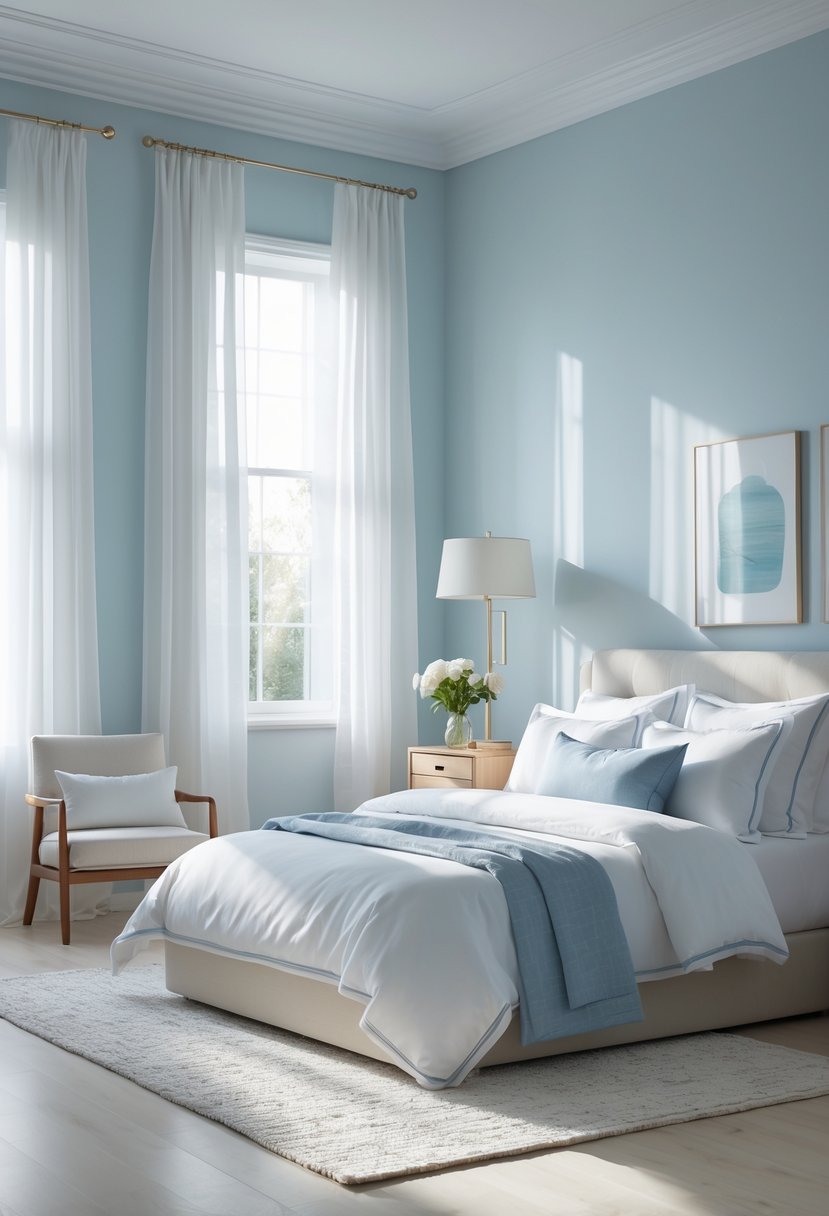
They can use Borrowed Light to add soft, pale blue tones to a bedroom. This paint works well in rooms with little natural light, brightening the space without being too bold.
Borrowed Light has a calm, subtle color that sometimes looks near grey or off-white. It fits well with many styles, from coastal to modern.
Using this paint can make the bedroom feel more peaceful and inviting. It is suitable for walls, ceilings, or even as an accent around windows.
7) Mix red and pink accents for rich contrast
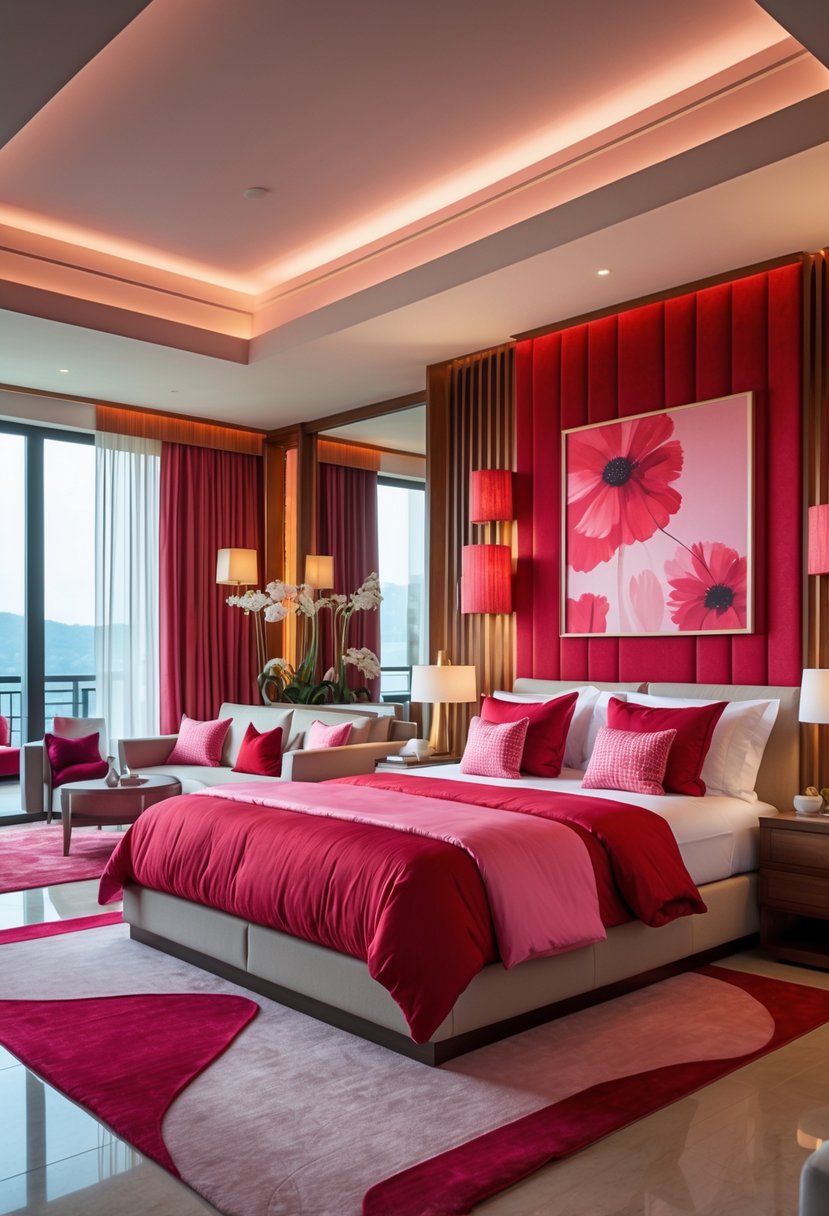
Using red and pink accents together creates a strong visual contrast. Red brings energy, while pink adds softness.
He or she can try a red accent wall with pink bedding or pink walls paired with bold red curtains.
This mix balances bold and delicate tones. It works well for those who want a stylish but cozy bedroom.
8) Add gold nailhead trim to furniture for elegance

Gold nailhead trim adds a subtle touch of elegance to furniture pieces. It works well on headboards, chairs, and ottomans.
The trim highlights shapes and edges, giving furniture a refined look. It can suit both classic and modern bedroom styles.
Spacing the nailheads evenly creates a balanced, polished finish. This detail can be added to existing furniture with basic tools.
9) Use textured fabrics for warmth and comfort
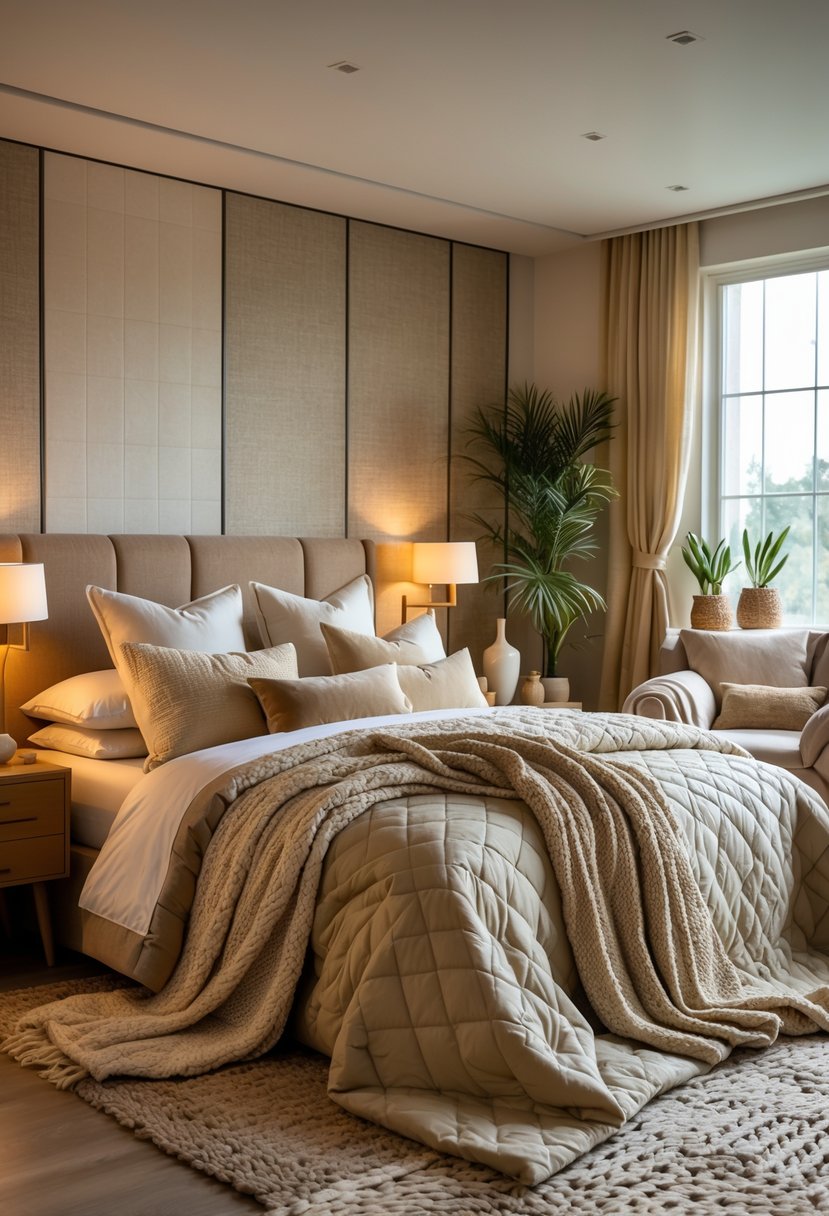
Textured fabrics add both warmth and a cozy feel to any bedroom. Materials like velvet, chunky knits, and woven fabrics create layers that make a room feel inviting and lived-in.
Adding a soft throw or textured pillows on the bed can give comfort without clutter. Rugs made from natural fibers, such as jute, balance softness with rustic charm.
These fabrics also add visual interest by breaking up plain surfaces. Using different textures helps create a bedroom that feels both warm and comfortable.
10) Combine calming coastal tones for tranquility

Using soft blues and whites creates a peaceful feel in a bedroom. These colors remind people of the sea and sky.
Adding sandy beige and natural textures, like wood or linen, helps balance the look. It makes the space feel warm but still fresh.
Small touches, like striped patterns or nautical accents, can enhance the coastal theme without overwhelming the room. This keeps the design simple and calming.
Balancing Functionality and Aesthetics
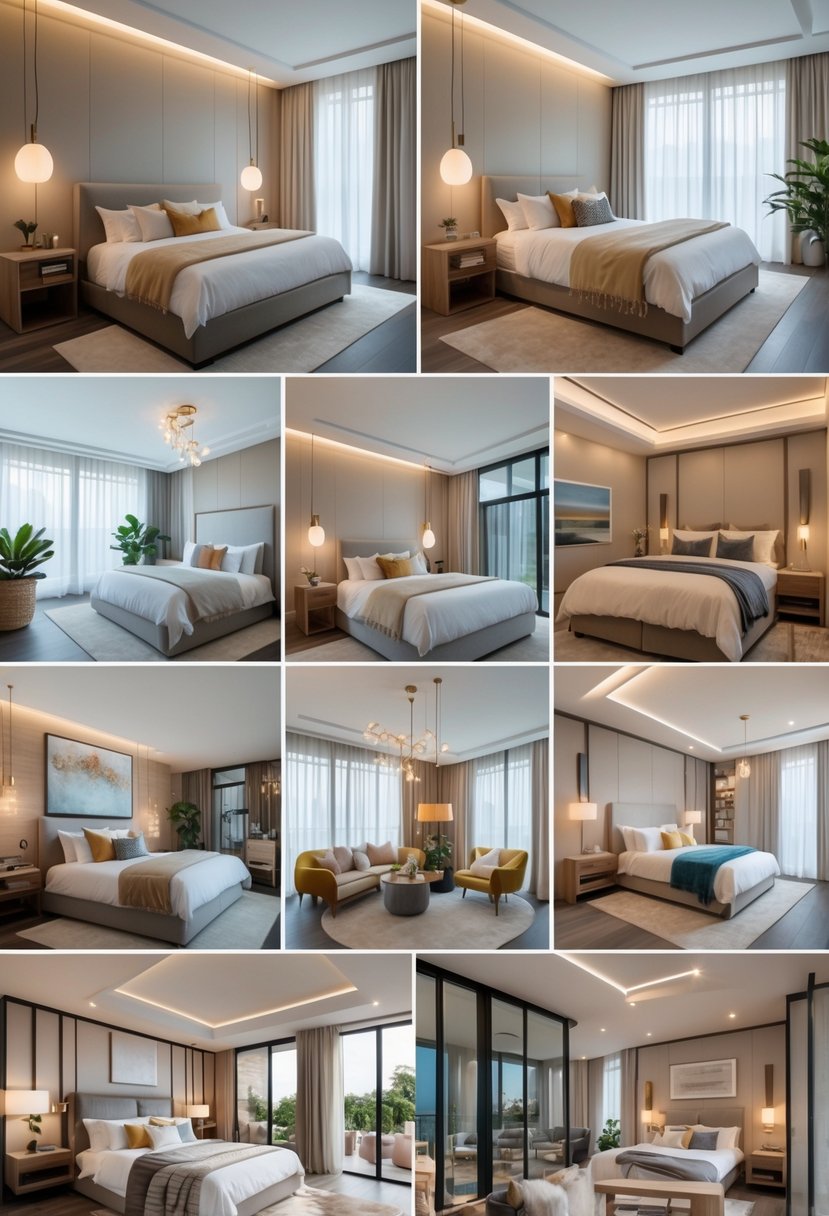
Creating a bedroom that works well and looks good demands thoughtful planning. The right choices in layout, furniture, and style ensure the space feels relaxing yet practical. Both comfort and design matter equally to make the room inviting and useful.
Optimizing Space for Comfort
Effective use of space is key in any bedroom. Furniture with built-in storage, like beds with drawers or nightstands with shelves, helps keep clutter out of sight. This makes the room feel larger and more orderly.
In smaller rooms, selecting multi-purpose pieces like fold-out desks or wall-mounted shelves saves floor space. Clear pathways around furniture improve accessibility and comfort. Soft lighting layered with task and ambient sources enhances usability without crowding the room.
Color choices also affect comfort. Light tones open up the space visually, while darker colors add coziness. A balance ensures the room feels peaceful without shrinking visually.
Design Consistency Across Bedrooms
Maintaining design consistency helps unify a home with multiple bedrooms. Using a common color palette or complementary styles creates a smooth visual flow.
Furniture styles should match or coordinate well. For example, modern bedrooms benefit from clean lines and minimalist decor, while a farmhouse look leans on rustic wood pieces and cozy textiles.
Repeating certain elements, such as metal finishes or fabric textures, ties spaces together. This cohesiveness makes individual rooms feel part of a larger whole without being identical. Balance here means each bedroom is distinct but connected by shared design choices.
Key Considerations for Multi-Bedroom Design
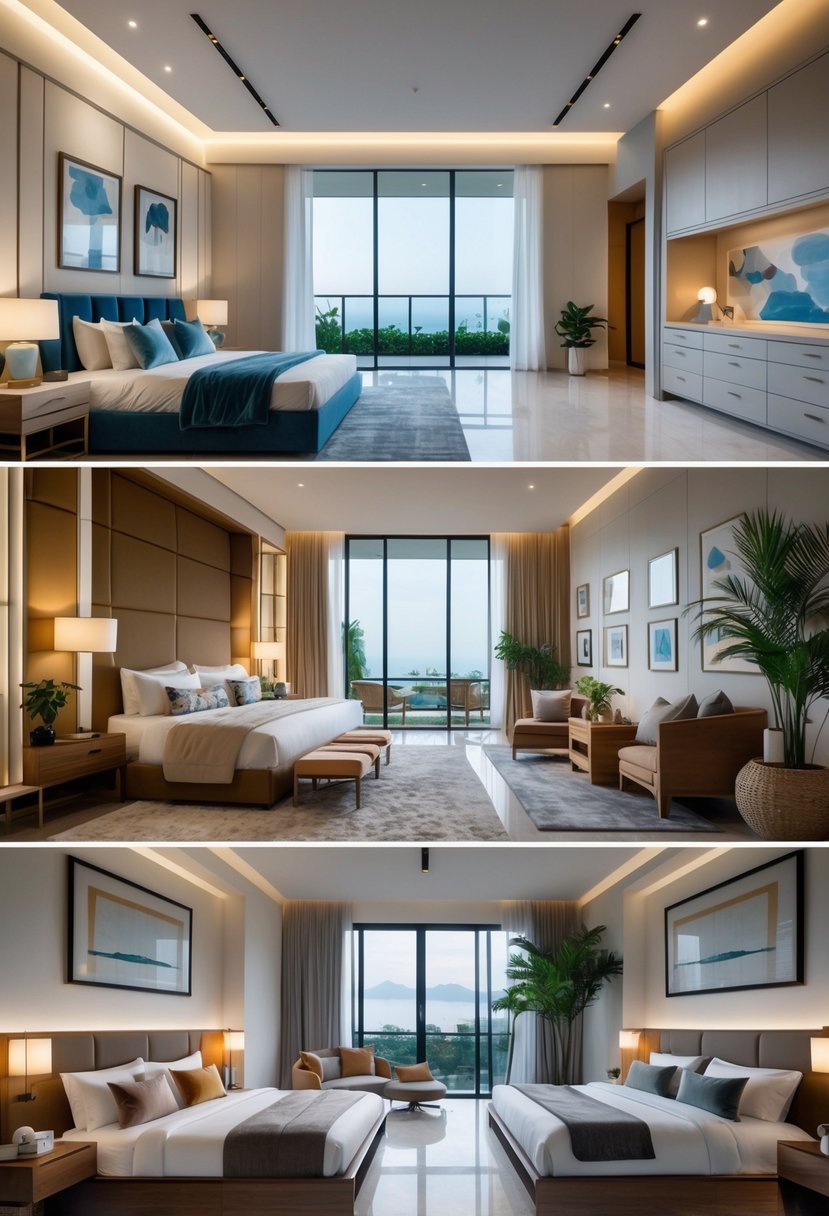
Designing a home with multiple bedrooms requires careful planning to balance shared space and individual comfort. Important factors include how to provide privacy between rooms, choosing colors that unify the house without making it feel boring, and setting up lighting that works for everyone’s needs.
Privacy Solutions for Large Homes
Privacy is essential in homes with many bedrooms. Using walls, doors, and soundproof materials can reduce noise and visual overlap. Placing bedrooms at opposite ends of a hallway creates physical separation.
Furniture like bookcases or screens can act as room dividers in shared areas. For sound, adding carpets, heavy curtains, or acoustic panels helps lower noise levels. Lockable doors or separate entrances add extra security and personal space.
Shared bathrooms should be placed where multiple rooms can access them easily but not directly open into bedrooms, maintaining privacy. Room layouts that consider natural light and sightlines improve comfort without sacrificing privacy.
Cohesive Color Palettes
Choosing a color palette that flows across bedrooms helps unify a home’s design. A well-balanced palette includes neutral base colors paired with soft accent hues.
Each bedroom can use variations of the main palette to express unique styles while feeling part of the whole. For example, using different shades of blue or green keeps harmony but allows variety.
Avoid overly bright or contrasting colors that break the flow between rooms. Using the same trim, wall, or ceiling color throughout the house can strengthen cohesion.
Lists of effective palette ideas include:
- Neutral walls + pastel accents
- Earth tones + muted reds or oranges
- Grays + navy blues or soft yellows
These combinations support peace and consistency across multiple bedrooms.
Lighting Strategies for Multiple Bedrooms
Lighting in multi-bedroom homes should be flexible and functional. Combining natural light with layered artificial lighting offers options for different times and activities.
Each bedroom should have a main overhead light paired with softer task lighting like bedside lamps. Dimmer switches allow residents to adjust brightness.
Hallways and shared spaces benefit from wall sconces or recessed lights to avoid harsh glare. Using energy-efficient bulbs reduces costs and supports sustainable design.
Smart lighting systems allow control over brightness and color temperature in each room independently. This customization improves comfort and energy use for each bedroom occupant.
Frequently Asked Questions
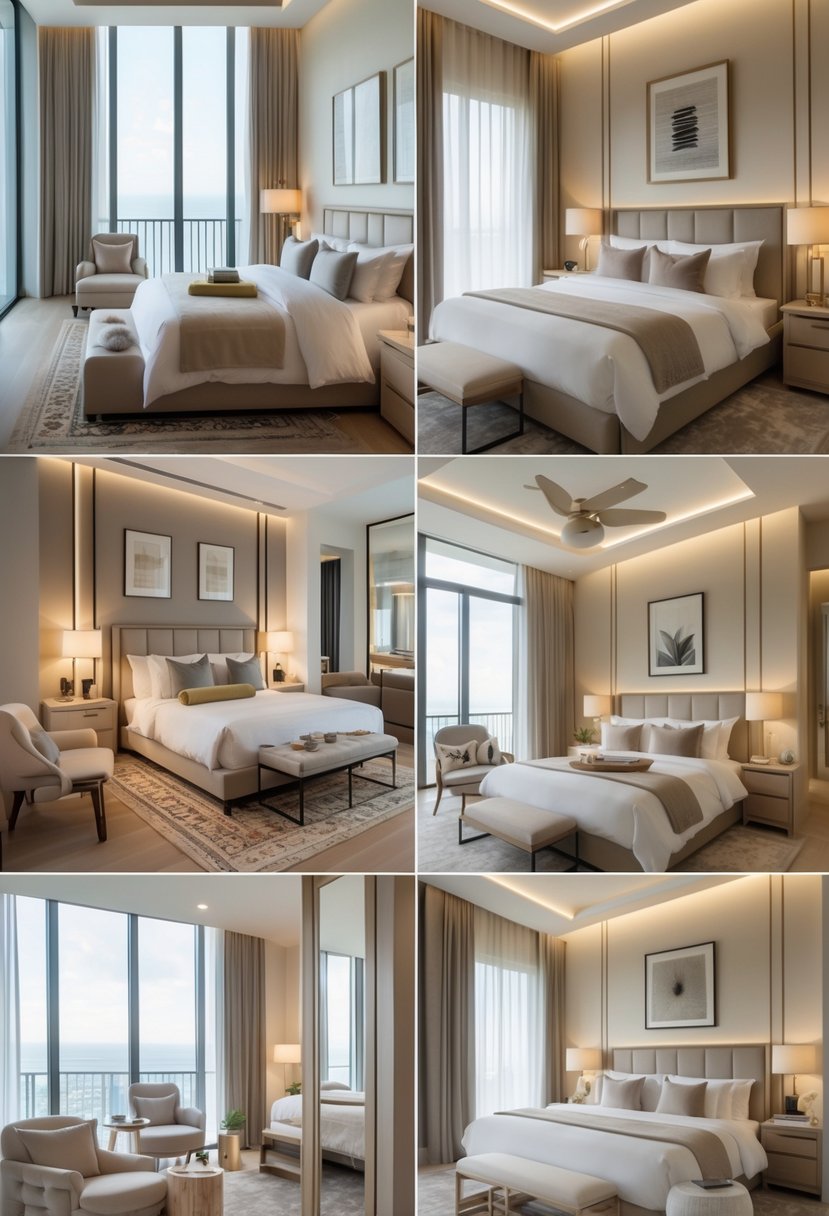
Space-saving ideas and careful furniture choices help make bedrooms feel organized and comfortable. Attention to size and layout allows for both style and practicality, even in smaller rooms.
What storage solutions are best for a bedroom with limited space?
Using built-in closets or wall shelves maximizes vertical space. Multi-functional furniture, like beds with drawers underneath, provides extra storage without clutter. Organizers inside drawers and closets help keep items neat and accessible.
How do you fit a queen bed in a 10×10 room while maintaining functionality?
Position the queen bed against the longest wall to preserve walking space. Avoid blocking windows to keep natural light flowing. Smaller bedside tables and minimal furniture around the bed help maintain clear pathways.
Which types of desks are most suitable for a compact bedroom space?
Slim, wall-mounted desks or fold-down models save floor space. Placing a desk near a window provides natural light for work or study. Choosing desks with built-in storage helps keep supplies organized without crowding the room.

